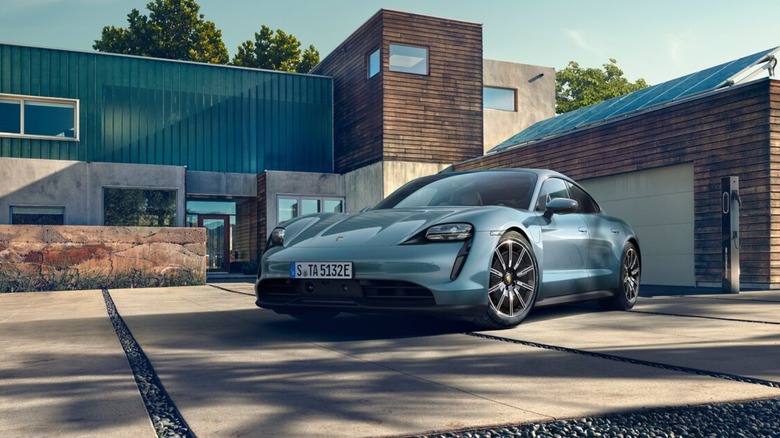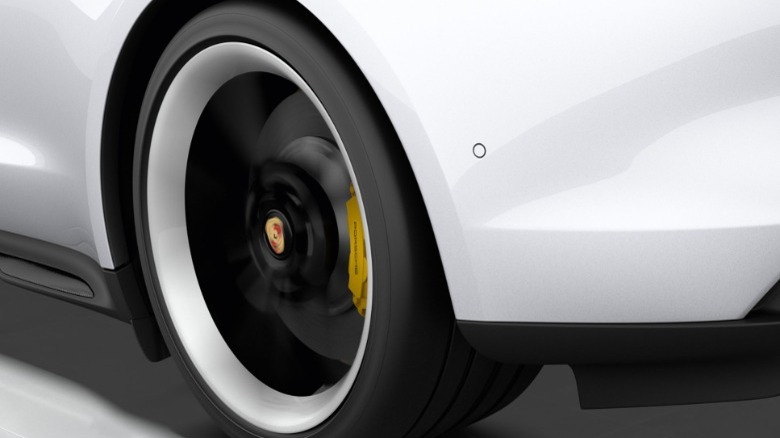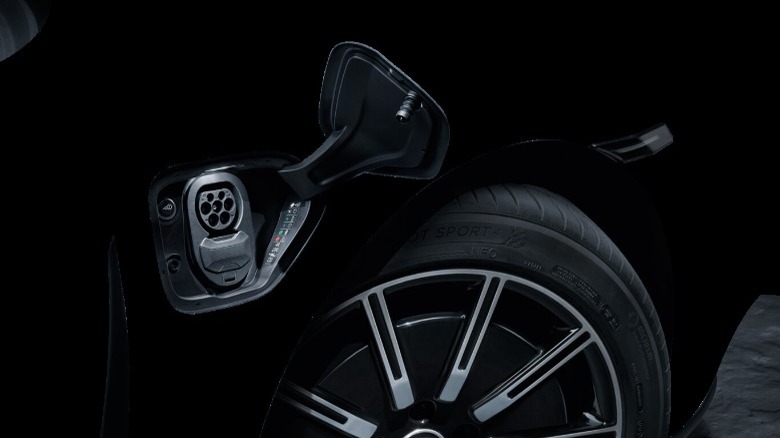Porsche's Most Impressive EV Technology Has Nothing To Do With Speed Or Horsepower
As the EV revolution has taken over the automotive industry, the advantages and pitfalls of the tech have started to reveal themselves. Lightning-fast acceleration and low-down weight help make EVs remarkably fun to drive despite the limited range and slow charging times — relative to the five minutes it takes to fill up with gas — that come with the territory.
The industry, as a whole, has come a long way in solving many of the problems associated with EVs. Public charging networks, ultra-fast charging, improved battery technology, and regenerative braking have all helped reduce the amount of time you spend connected to the charger. Owning an EV has become a much more attractive prospect than it ever has been.
There are many EV makers hard at work making important advancements in different aspects of EVs. Rivian and GMC are putting out some very impressive off-road-capable vehicles, while Polestar and Hyundai-Kia are releasing more affordable, practical vehicles that look spectacular and are fun to drive. Porsche, in particular, has put a lot of work into refining its electric vehicle platform, with the goal of improving EV ownership and preserving the thrill of driving.
Porsche may be taking it slow, but the strides it has made are monumental, especially in regards to efficiency and regenerative braking. The Porsche Taycan uses technology first developed for use in the 918 Spyder hybrid to regenerate up to 30% of its overall range, dethroning even Tesla.
The Porsche Taycan takes a different approach to regen braking
Braking is a vital part of the driving experience, and brakes can either inspire confidence or instill terror in the driver. Fortunately, EVs generally fall in a price category that ensures at least competent braking. Porsche realizes the importance of braking in EVs, and takes things to the next level with the regenerative braking system in the Taycan.
Starting with the most important part of braking — the safety and user experience. Porsche consciously designed the regenerative braking as part of the brake pedal so that it relies on pre-existing driving habits. This is contrary to Tesla vehicles, which apply regenerative braking whenever the accelerator pedal is released, and default to the mechanical brakes with the brake pedal. Porsche does apply mild amounts of regenerative braking when drivers lift off the accelerator, but only to emulate natural engine braking.
Part of the reason Porsche is able to use regenerative braking on the brake pedal, as opposed to the one-pedal approach, is because of how potent the regenerative braking is on the Porsche.
The Taycan's regen braking is up to four times as potent as Tesla
Porsche deliberately shies away from one-pedal driving modes, with the goal being an authentic driving experience and "consistent, predictable feedback," according to Porsche Head of Chassis Development Ingo Albers. This approach makes powerful regen braking mandatory, though, and Porsche delivers on that front, too.
According to Porsche, hard braking generates up to two megawatts (2,000 kW) of energy being applied through the brakes, meaning all of that energy is theoretically available to scavenge and put back into the battery. Porsche hasn't gotten that far just yet, and although it intends to increase its regenerative braking efficiency, the regenerative brakes on the Taycan are capable of recouping an industry-leading 290 kW of energy.
Tesla doesn't publish its regenerative braking numbers, but according to Engineering.com, the Model S returns somewhere in the region of 60 kW of charge. Collectorscarworld reports that the Polestar 2 can regenerate up to 100 kW from regenerative braking. Both are still a far cry from the Taycan's 290 kW.
It might seem insignificant, but Porsche's regenerative braking pays off when it comes to range. As InsideEVs's highway range tests show, the Porsche Taycan outperforms its EPA range claims by upwards of 30% in some cases, while the best of its competitors, the Mercedes-Benz EQS 450+, comes in at 13% above the EPA rating. Interestingly enough, the EQS 450+ is capable of a comparatively high peak regenerative braking of 186 kW.


